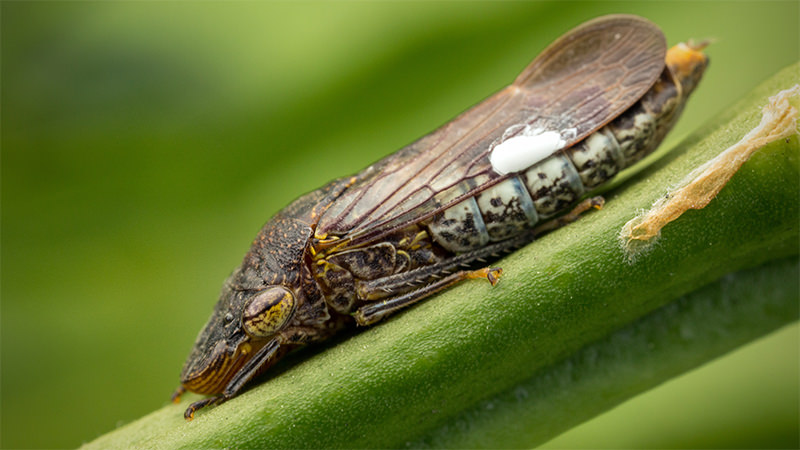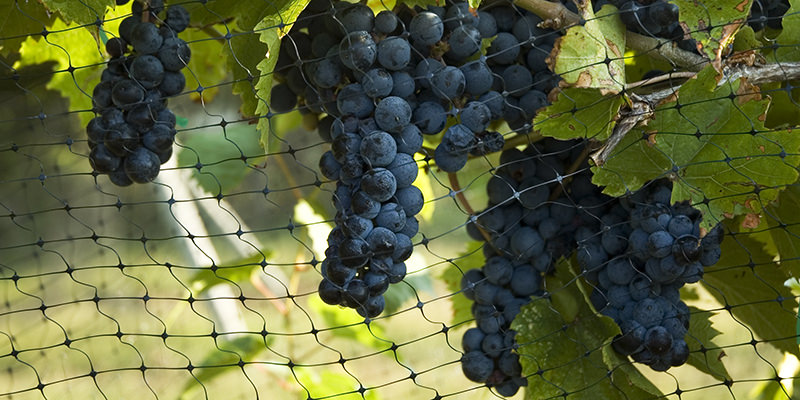If you’ve ever had a backyard garden, you know the feeling of defeat when invisible pests turn flourishing tomato and zucchini plants into wilted twigs for seemingly no reason. Vineyard managers often face these same microscopic monsters even when Mother Nature is feeling generous and offering long summer days and cool, dry nights. Nature’s henchmen–the bugs, birds, and fungi–consistently threaten ideal vintages and require constant battling by vineyard workers. Read on to discover summer’s top vineyard nuisances and ways to stop them. Some might even help those tomato plants on the patio or fire escape.
The Sun
“Everything in Moderation” is the vintner’s motto, and that even applies to sunshine. Not enough and grapes won’t ripen adequately, but too much direct sunlight–a common threat across hot New World vineyards–can wilt vines and sunburn grapes. Overexposure turns soft grape skins scaly and brown and can result in bitter, raisiny-flavors in the finished wine. In most cases, the only solution is to remove each sunburned grape during harvest. In a vineyard with thousands of vines this means a lot of man-hours and big expenses for growers.
In essence, a thick canopy is SPF for grapes, and the trick is to allow a healthy canopy to form over the grapes that offers adequate sunshine for growth yet prevents excessive direct light.
The Glassy-Winged Sharpshooter
As the name suggests, this bug is the super-villain sniper of the grape biz. The sharpshooter looks like a small grasshopper with flat, shiny wings and spreads Pierce’s Disease across vineyards quickly and efficiently. This disease, the cancer of vineyards, prevents vines from transporting water efficiently within their trunks and roots, eventually killing the vine. This disease spreads quickly, so any sign of the sharpshooters is severe cause for concern. Unlike other bugs, the glassy winged sharpshooter can fly long distances and live on a wide variety of plants, making it extremely difficult to eradicate. Here, powerful insecticides are often the only answer to saving vineyards and eradicating these destructive bugs.

Leafhoppers
Similar to the glassy-winged sharpshooter, leafhoppers nibble on vine leaves, leaving small white or yellow spots or even turning an entire leaf yellow and incapable of photosynthesis. These dead leaves often drop from the plant and result in sunburned grapes as canopies disappear. Infected vines often lose future productivity as a result of leafhopper damage.
Luckily, natural predators like spiders and mites can control leafhopper populations across vineyards, as can simple practices like removing wild weeds and grasses that can harbor infant leafhoppers waiting to jump onto vines. Organic soaps and oils sprayed or rubbed onto vines and their leaves also remove these pesky critters.
Mealybugs
The vine mealybug is as gross as it sounds. Only a quarter-inch in size, these creepy crawlers spend their entire life cycles on or in the wood of a vine trunk, expanding into the canopy during the summer months. Once on the grapes, they infest the berries with cottonball-esque egg sacs and larvae, making them useless for wine.
Ladybugs and wasps naturally attack mealybugs, so three cheers if you find them on a vineyard tour or in your yard. Similarly, training vines so clusters don’t touch the vine wood helps prevent mealybugs from infecting ripening bunches.
Powdery Mildew
Powdery mildew covers grape vines like a thin spider web, preventing effective photosynthesis and ruining grape clusters. If allowed to flourish, the vines eventually look as though they’ve been dusted with baby powder, hence the name powdery mildew. In cooler climates where temperatures remain between 60 and 80 degrees, powdery mildew spores grow exponentially and can quickly take over vineyard areas. Plus, their spores can survive the winter inside dormant branches, making this mold hard to overcome.
Unlike other diseases that can be eradicated simply, powdery mildew requires regular chemical sprays such as sulfur or horticultural oil, especially in humid environments where mildew spores reproduce rapidly.
Birds and Other Animals
As soon as grapes start veraison, the period when grape skins change color, birds perform air strikes that can annihilate a year’s crop in a matter of days. These same berries and lush greenery attract deer, rabbits, and even moles to vineyards, creating the perfect storm of predation just before harvest.
Encircling vineyards with tall fencing and draping fine netting across rows of vines keeps some predators away, as do ground-shattering air cannons that scare away animals (and unsuspecting visitors) with a fireworks-like blast.

